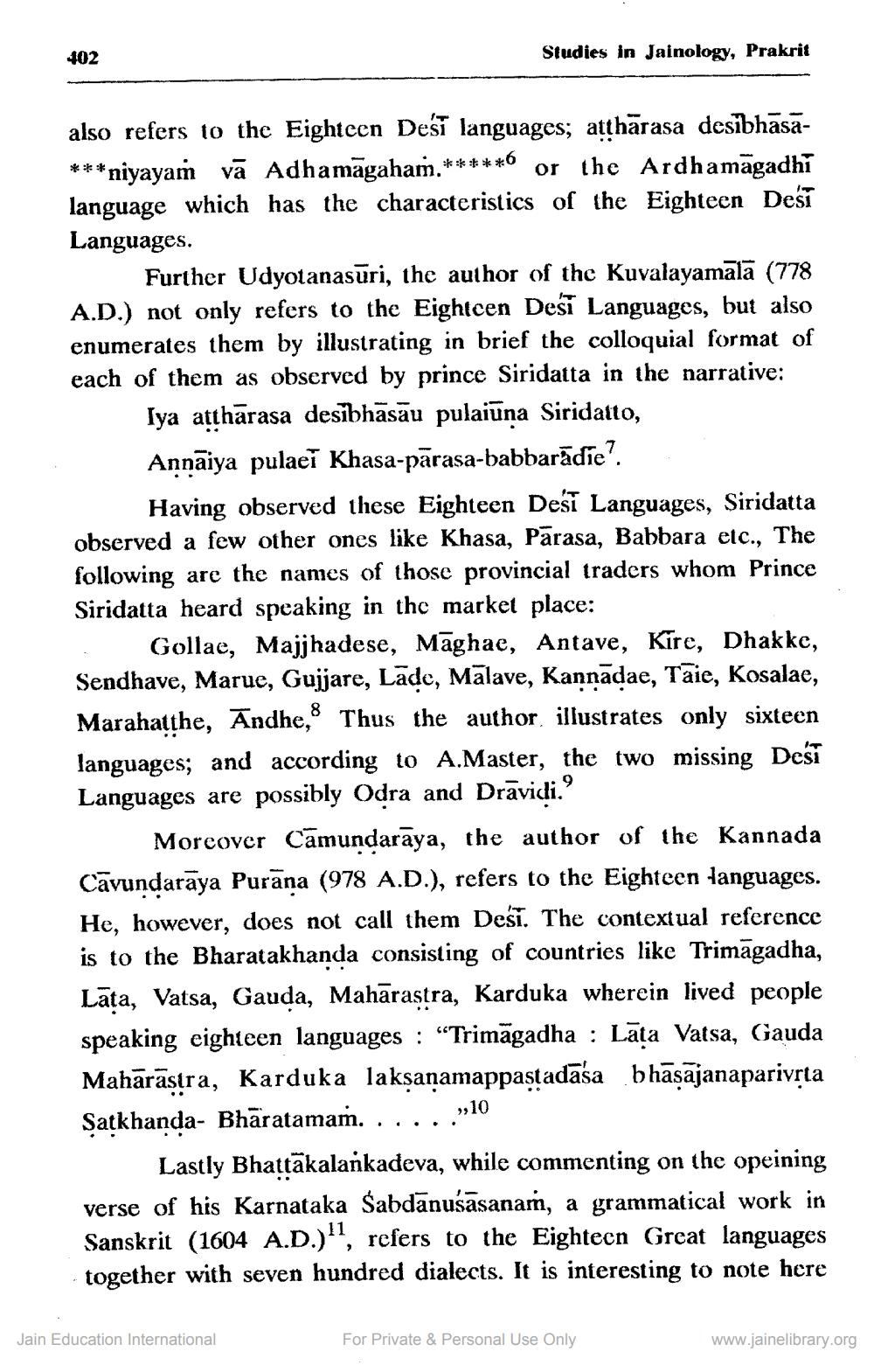________________
402
Studies in Jainology, Prakrit
also refers to the Eighteen Desi languages; atthārasa desibhasa***niyayam vā Adhamāgaham.*****6 or the Ardhamagadhi language which has the characteristics of the Eighteen Desi Languages.
Further Udyotanasūri, the author of the Kuvalayamala (778 A.D.) not only refers to the Eightcen Desī Languages, but also enumerates them by illustrating in brief the colloquial format of each of them as observed by prince Siridatta in the narrative:
Iya atthārasa desībhasāu pulaiuna Siridatto, Annāiya pulaer Khasa-pārasa-babbarādie”.
Having observed these Eighteen Desi Languages, Siridatta observed a few other ones like Khasa, Pārasa, Babbara etc., The following are the names of those provincial traders whom Prince Siridatta heard speaking in the market place:
Gollae, Majjhadese, Māghae, Antave, Kire, Dhakke, Sendhave, Marue, Gujjare, Lāde, Mālave, Kannadae, Taie, Kosalae, Marahatthe, Andhe, Thus the author illustrates only sixteen languages; and according to A.Master, the two missing Desi Languages are possibly Odra and Dravidi.
Moreover Cāmundaraya, the author of the Kannada Cāvundarāya Purana (978 A.D.), refers to the Eighteen languages. He, however, does not call them Desī. The contextual reference is to the Bharatakhanda consisting of countries like Trimāgadha, Lāța, Vatsa, Gauda, Maharastra, Karduka wherein lived people speaking eighteen languages : “Trimāgadha : Lāta Vatsa, Gauda Mahārāsıra, Karduka laksanamappastadasa bhāsajanaparivrta Satkhanda- Bhāratamam. . . . . .»10
Lastly Bhattākalankadeva, while commenting on the opeining verse of his Karnataka Šabdanusāsanam, a grammatical work in Sanskrit (1604 A.D.)", refers to the Eighteen Great languages together with seven hundred dialects. It is interesting to note here
Jain Education International
For Private & Personal Use Only
www.jainelibrary.org




